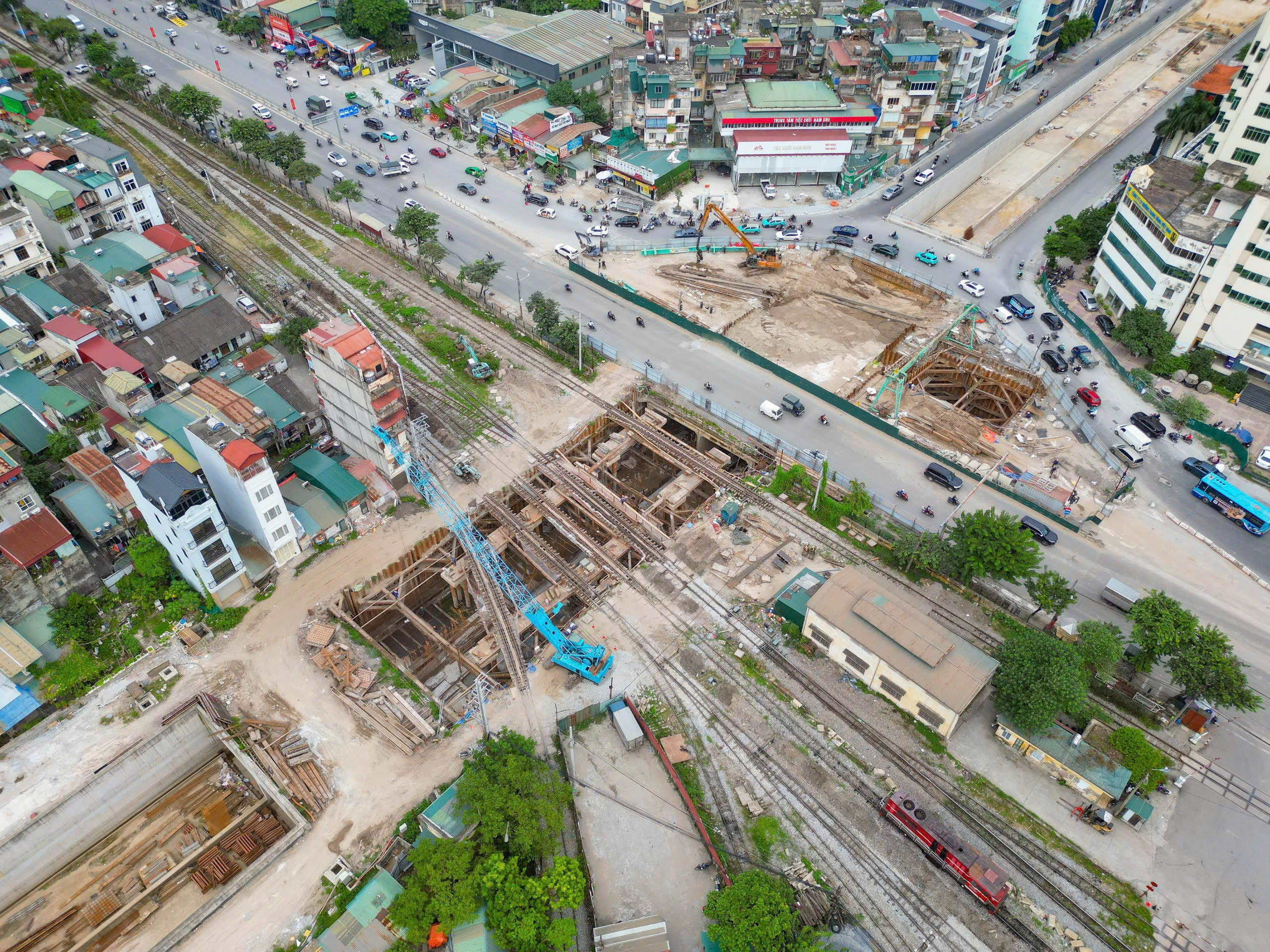In August 2024, the Tam Trinh road expansion project (old Hoang Mai district) restarted after many years of difficulties in site clearance (GPMB). At this time, a part of the clean site was handed over by the investor to the contractor to implement the project.
However, according to the reporter's records in early November 2025, the Tam Trinh road expansion project is still being constructed at a slow pace, causing chaos in each "sticky rice and bean" section.
The Tam Trinh road project passes through Hoang Mai, Vinh Tuy and Tuong Mai wards (new) with a total area requiring site clearance of more than 72,444m2, involving 1,594 households and 21 organizations.

Hoang Mai ward was assigned by the city as the investor, a key area of this project, accounting for more than 60% of the entire project area with 45,280m2 requiring site clearance, involving 1,337 households and 4 organizations.
To date, only about 48% of the area has been handed over. The project has been delayed for 8 years and localities are making efforts to complete the site clearance work in the second quarter of 2026.
The project to upgrade and expand Linh Nam road is also in a state of being unable to be implemented due to land clearance problems.
After the operation of the two-level local government model (1.7), the Hanoi People's Committee assigned the Vinh Hung Ward People's Committee as the investor to implement the project to upgrade and expand Linh Nam road.
The total land area recovered for the project is 98,345.92m2, involving 814 households and 33 organizations in 5 wards including Vinh Tuy, Tuong Mai, Vinh Hung, Hoang Mai and Linh Nam.
Linh Nam Ward is the first locality to complete the site clearance work with 3 households and 2 organizations. Meanwhile, Tuong Mai ward is the biggest bottleneck of the project.

According to the investor's representative, the biggest difficulty is currently the complicated origin of land. On the same plot of land, it is possible to intertwine residential land, garden land, pond land or agricultural land according to Decree 64.
Many households have bought and sold their own, transacting with handwritten documents, through many owners. When comparing the legal documents, the owner takes a lot of time. This forces relevant units to review extremely carefully.
Currently, the investor is actively coordinating with the wards to solve problems, discuss and propose the best support mechanism and solutions for the people, ensuring the site clearance process is effectively implemented.

In contrast to the Tam Trinh and Linh Nam road expansion project, the project to build the Ring Road 2.5 section Dam Hong - National Highway 1A and the Kim Dong - Giai Phong underpass is being accelerated.
The Ring Road 2.5 project, Dam Hong - National Highway 1A section, was re-constructed from May 2025 after many years of "shelving" due to problems in site clearance and BT contract extension.
The project is 1.3km long, with a total investment of more than 1,300 billion VND, the investor is Hoang Mai Construction Investment Company Limited - Hanoi.
Up to now, the contractor has restarted the construction of the L3 bridge across the Lu River - an important item of the project. The total volume of the entire route has reached more than 70%.
For the remaining volume, the investor is directing the contractor to mobilize maximum machinery and personnel, organize construction in 3 shifts, 4 teams, commit to ensuring safety and quality, and bring the project to the finish line in the first quarter of 2026.

Along with the Ring Road 2.5 project, Dam Hong - National Highway 1A section, the progress of the Kim Dong - Giai Phong underpass project is also being accelerated.
Started in October 2022, the underpass project with a total investment of 778 billion VND, invested by the Hanoi Traffic Construction Investment Project Management Board, has reached over 75% of the progress.
It is expected that in the first quarter of 2026, the 5th underpass of Hanoi will be completed, synchronously connecting with Ring Road 2.5, Dam Hong - National Highway 1A section.
These are all important transport projects, helping to reduce congestion, increase connectivity, and contribute to the socio-economic development of the South of the Capital.











